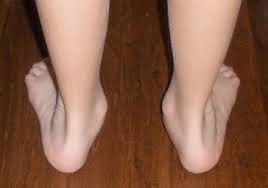TROCHANTERIC BURSITIS
Pain over the lateral aspect of the hip and thigh may be due to local trauma or overuse, resulting in inflammation of the trochanteric bursa which lies deep to the tensor fascia lata. There is local tenderness and sometimes crepitus on flexing and extending the hip. Swelling is unusual but post-traumatic bleeding can produce a bursal haematoma.

 X-ray may show evidence of a previous fracture or a protruding metal implant or trochanteric wires dating from some former operation. There may also be calcification or shadows suggesting swelling of the soft tissue. It is important to exclude underlying disorders such as Gout, Rheumatoid Arthritis and infections (including Tuberculosis)
X-ray may show evidence of a previous fracture or a protruding metal implant or trochanteric wires dating from some former operation. There may also be calcification or shadows suggesting swelling of the soft tissue. It is important to exclude underlying disorders such as Gout, Rheumatoid Arthritis and infections (including Tuberculosis) Other causes of pain and tenderness over the greater trochanter are stress fracture (in athletes and elderly patients), slipped epiphysis (in adolescents) and bone infections (in children). The common cause of misdiagnosis is referred pain from the lumbar spine.
The usual treatment is rest, Physiotherapy, NSAIDs, and injection of local anaesthetic and corticosteriod (provided infection is excluded). If a haematoma is present should be drained.
In Physiotherapy, cold compression, ultrasonic therapy and TENS can help reduce pain and swelling.
GLUTEUS MEDIUS TENDINITIES
Acute tendinitis may cause pain and localized tenderness just behind the greater trochanter. This is seen particularly in dancers and athletes. The clinic finding and X-ray features are similar to those of trocanteric bursitis, andthe deferential diagnosis is the same. Treatment protocol is also almost the same.
ADDUCTOR LONGUS STRAIN OR TENDINITIS
This overuse injury is often seen in footballers and athletes. The patients complains of pain in the groin and tenderness can be localized to the adductor longus origin, close to pubis. Swelling below this site may signify an adductor longus tear.
Acute strains are treated with rest and heat., while chronic strains may need prolonged PHYSIOTHERAPY.
ILIOPSOAS BURSITIS
Pain in the groin and anterior thigh may be due to an iliopsoas bursitis. The site of tenderness is difficult to define and there be guarding of the mussels overlying the lesser trochanter. Hip movements are sometimes restricted; indeed, the condition may arise from synovitis of the hip joint since there is often potential communication between the bursa and joint.
The most typical feature is a sharp pain on adduction and internal rotation of the hip. Pain is also elicited by testing psoas contraction against resistance.
The differential diagnosis of anterior hip pain includes lymphadenopathy, hernia, a psoas abscess, fracture of the lesser trochanter, slipped epiphysis, local infection and arthritis.
SNAPPING HIP
Snapping hip is a disorder in which the patient (usually women) complains of hip ‘jumping out
of place, or catching’, during walking. The snapping is caused by a thickened
band in the gluteus maximus aponeurosis flipping over the greater trochanter.
In the swing phase of walking the band moves anteriorly; then, in the stance
phase, as the gluteus maximus contracts and pull the hip in extension, the band
slips back across the trochanter causing an audible snap. This is usually
painless but can be quite distressing, especially if the hip gives way.
Sometimes there is tenderness around the hip, and it may be possible to
reproduce the peculiar sensation by flexing and extending the hip while the
patient contracts the abductors.
Treatment of the snapping tendon is usually unnecessary, the
patient merely needs an explanation and reassurance. Occasionally, though if
discomfort is marked, the band can be either divided or lengthened by Z-
plasty.
referances:
solomon
mendmeshop pics
for any assistance for pain around hip,
contact PAIN FREE PHYSIOTHERAPY CLINIC
31 A, DDA Flats, Pocket 2, Behind Sec 6
Dwarka, New Delhi 110075






.jpg)















